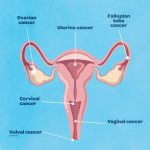Leukemia is a cancer of the blood and bone marrow. In simple terms, cancer is defined as the uncontrolled outgrowth of abnormal cells. Cancer can develop anywhere in the body. In leukemia, this rapid, out-of-control growth of abnormal cells takes place in the bone marrow of bones. These abnormal cells then spill into the bloodstream. Unlike other cancers, leukemia generally doesn’t form into a mass (tumor) that can be seen in imaging tests, such as X-rays.
There are many types of leukemia. Some are more common in children; others are more common in adults. Treatment depends on the type of leukemia you have and other factors.
Symptoms
Leukemia symptoms vary, depending on the type of leukemia. Common leukemia signs and symptoms include:
- Fever or chills
- Persistent fatigue, weakness
- Frequent or severe infections
- Losing weight without trying
- Swollen lymph nodes, enlarged liver or spleen
- Easy bleeding or bruising
- Recurrent nosebleeds
- Tiny red spots in your skin (petechiae)
- Excessive sweating, especially at night
- Bone pain or tenderness
Causes
Researchers do not know what exactly causes leukemia. However, there are some risk factors for developing this cancer. Some of these risk factors include:
- previous chemotherapy or radiation for other types of cancers
- genetic disorders like Down syndrome
- other blood cancer disorders
- repeated exposure to the chemical benzene, which is found in cigarette sm
Risk factors
The causes of leukemia are not currently known. However, several factors that may increase your risk have been identified. These includeTrusted Source:
- a family history of leukemia
- smoking, which increases your risk of developing acute myeloid leukemia (AML)
- genetic disorders such as Down syndrome
- blood disorders, such as myelodysplastic syndrome, which is sometimes called “preleukemia”
- previous treatment for cancer with chemotherapy or radiation
- exposure to high levels of radiation
- exposure to chemicals such as benzene
Treatment
The treatment you get depends on the type of leukemia you have, how far it’s spread, and how healthy you are. The main options are:
- Chemotherapy
- Radiation
- Biologic therapy
- Targeted therapy
- Stem cell transplant
- Surgery
Chemotherapy uses drugs to kill cancer cells in your blood and bone marrow. You can get the medicine:
- Through a shot into a vein or muscle
- As a pill
- Into the fluid around your spinal cord
Radiation uses high-energy X-rays to kill leukemia cells or keep them from growing. You can get it all over or in only one part of your body where there are a lot of cancer cells.
Biologic therapy, also called immunotherapy, helps your immune system find and attack cancer cells. Drugs like interleukins and interferon can help boost your body’s natural defenses against leukemia.
Targeted therapy uses drugs to block specific genes or proteins that cancer cells need to grow. This treatment can stop the signals that leukemia cells use to grow and divide, cut off their blood supply, or kill them directly.
A stem cell transplant replaces the leukemia cells in your bone marrow with new ones that make blood. Your doctor can get the new stem cells from your own body or from a donor. First, you’ll have high doses of chemotherapy to destroy the cancer cells in your bone marrow. Then, you’ll get the new stem cells through an infusion into one of your veins. They will grow into new, healthy blood cells.
Surgery. Your doctor can remove your spleen if it’s filled with cancer cells and is pressing on nearby organs. This procedure is called a splenectomy.
The list of some leukemia medicine:



